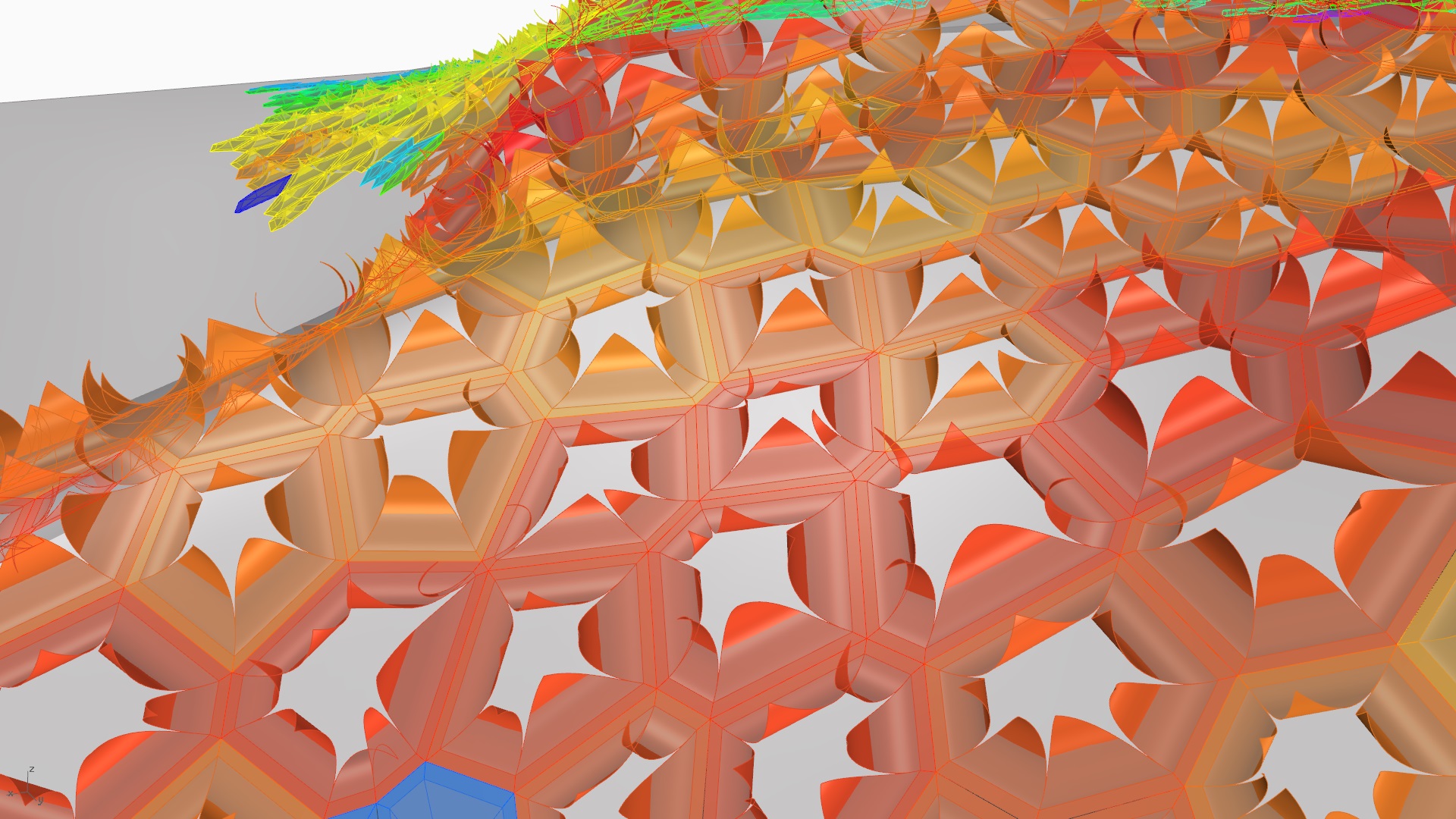Chin-Yi Cheng
2017


Project Parrot
Instructor: Caitlin Mueller, Assistant Professor in Building Technology, MIT
There are many dynamic form-finding methods and design tools that can simulate the deformation and transformation of materials, and some of these tools has been embedded into the parametric design platform, such as Kangaroo in Grasshopper. However, the simulation of elastic material with large displacement is still time consuming by using these tools, because in this case the solution of the final status has to be obtained through many iterations, i.e. there is no analytical solution. Moreover, if the user has to wait for the simulation result, the shape cannot be easily created, modified and operated.
To improve the current process of material simulation, this paper will propose a new method, Parrot, which applies the pattern matching technique to accelerate the form-finding process into almost real-time, and therefore make the design process more intuitive. A prototype of this method will be introduced, and the performance and accuracy of it will be evaluated and compared to the existing tool.
In this paper, I focused on discussing how to improve the process of designing and simulating the elastic material with large displacement, such as the examples shown in Figure 1. I tackled with the two main limitations of the dynamic form-finding method--speed and manipulability, by dividing the simulation process into two parts: the rigid-body simulation, which is computationally fast and has a good user interactivity; and the dynamic form-finding process, which help the user get the exact shape.
In order to fix the discontinuity between the rigid mechanism simulation and the dynamic form-finding, I proposed a new method, Parrot, which can “guess/mimic” an approximated shape from a pre-calculated shape database by using pattern matching algorithms. These matched shape would become a bridge to transform the rigid-body simulation result into the initial state for form-finding step. Moreover, after the transformation, since the shape is already similar to the final status, this method can significantly decrease the iteration time of the form-finding process. I built a prototype of this method using Rhinoceros, Grasshopper, Rhinoscripts and Kangaroo 2. Through evaluating the performance and comparing it with the current method, I proved that the method works significantly well.
Finding "GOOD guess" using pattern matching
To achieve the GOOD guess, I developed an algorithm that can use the polyline shape to match a correlated curve shape in the pre-calculated shape database. Parrot, the name of this project, is an analogy of what this algorithm does--a parrot which can imitate what the designer do from the memory in its brain.
Creating the pre-calculated database
The database is made by a collection of U-shape curves with zero to a small amount of bending moment at the two ends. I developed an algorithm to divide the shape into several arcs and calculate the curvature of each arc from one end to the other end of the curve using the given initial conditions.
Result
Project parrot has been implemented as a simulation engine in many of my research/projects, such as bioLogic.









